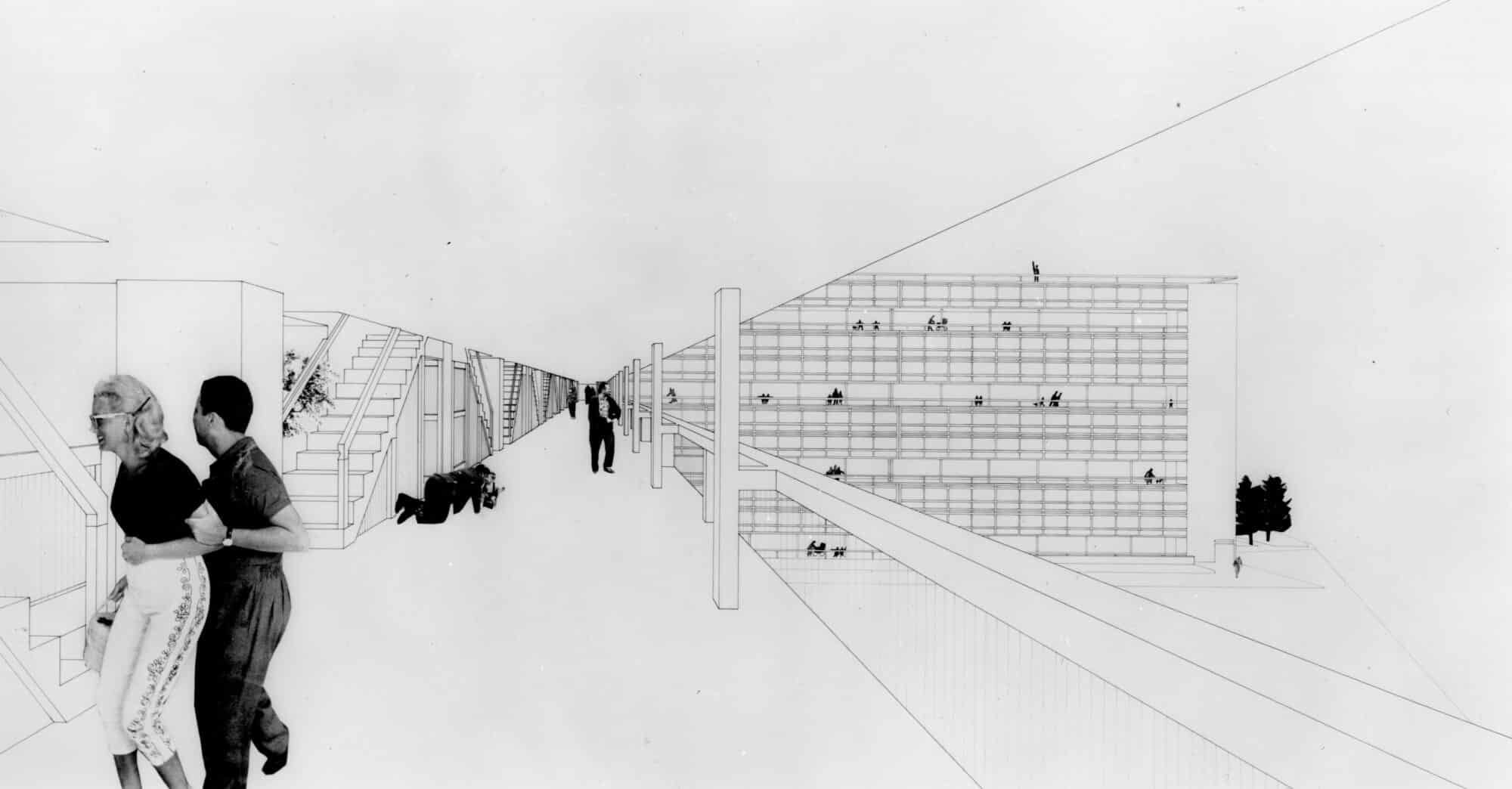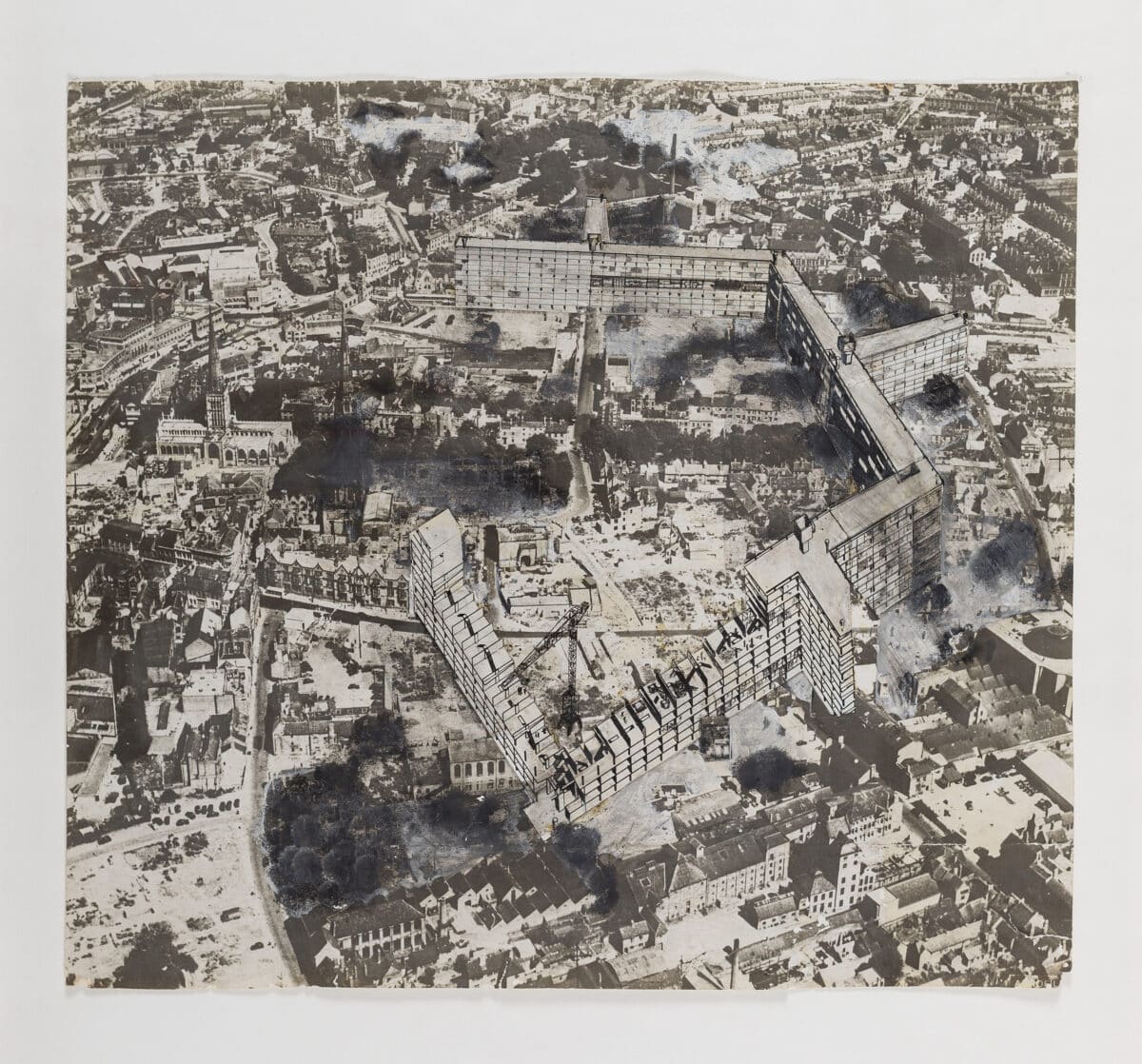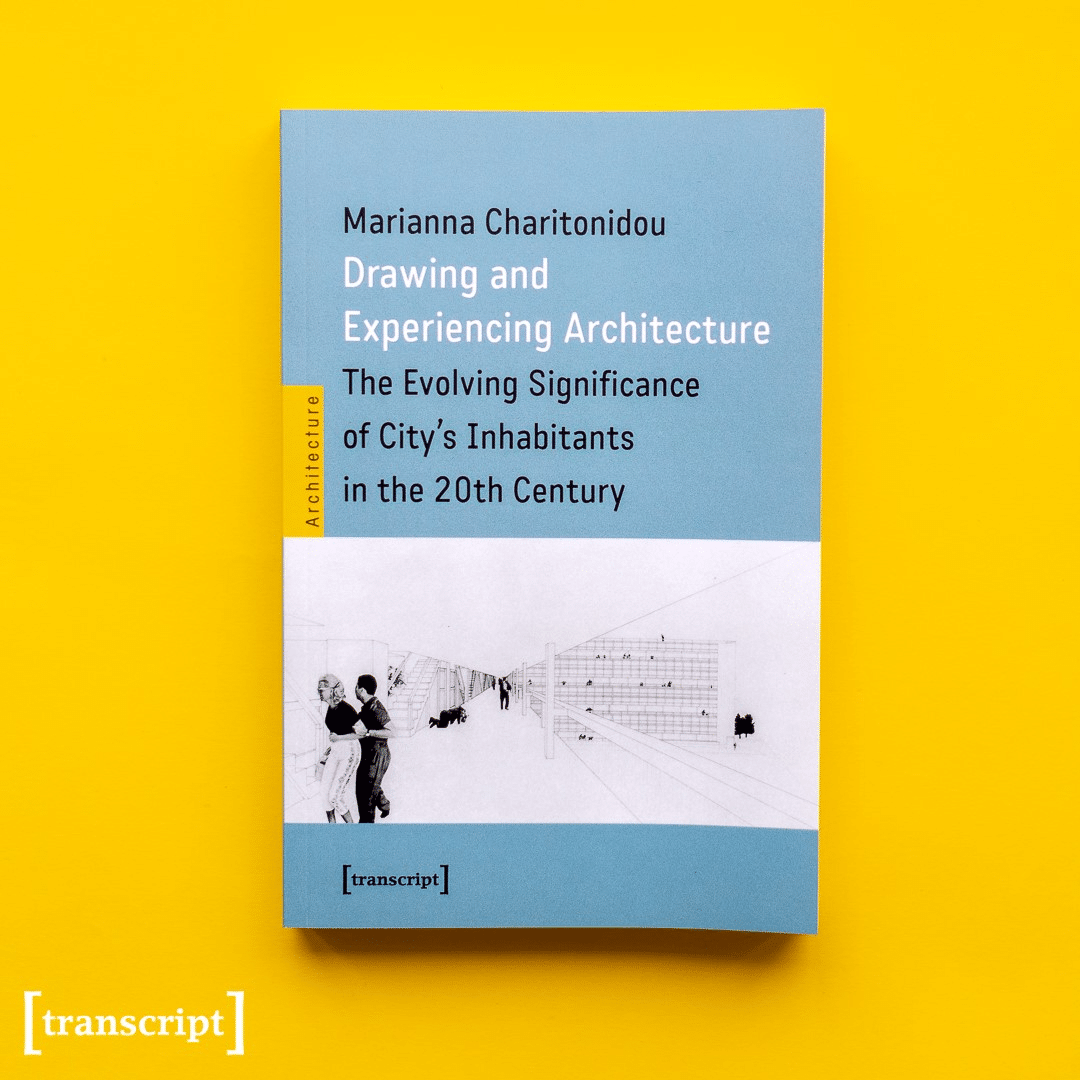Alison and Peter Smithson’s Collages as Reinventing Established Reality

Alison and Peter Smithson often introduced figures that were protagonists in the news, such as Marilyn Monroe and Joe DiMaggio, French actor Gérard Philipe, and the first prime minister of Independent India, Jawaharlal Nehru into their architectural drawings for social housing projects—as in the case of their collages for the Golden Lane Estate project in 1953. The Golden Lane Estate, which occupied an area flattened by wartime bombing, was one of the most defining public housing projects during the post-war reconstruction era in Great Britain. The contrast between Alison and Peter Smithson’s anti-aesthetic stance and their choice to use figures that were part of the present culture in their collages, could be interpreted as an invitation to challenge reality and its conventions.
In the Smithsons’ collages for the Golden Lane Estate, the contradiction between the photographs of celebrities and the post-war context, highlights the contrast between the status of the inhabitants and the old British society. Their collages were intended to show how the way of life of the dwellers would be opposed to the parochial British model. In their text, ‘The “As Found” and the “Found”’, Alison and Peter Smithson interpreted the “as found” as a new seeing of the ordinary, ‘an openness as to how prosaic “things” could re-energise our inventive activity’. [1] This belief in the capacity of the ‘as found’ to revitalise the way one sees the ordinary is present in the aesthetics of the collages for the Golden Lane housing project.

The Smithsons produced two types of collages: the first is a perspective view with reproductions of human figures, such as the collage with Marilyn Monroe and Joe DiMaggio for the Golden Lane Housing project (1952) or those for the Economist Building (1964) and the Robin Hood Gardens (1972); the second type of collage is a bird’s-eye view that showed how their projects would be inserted into the existing urban fabric. In a collage they produced for the Golden Lane Housing project, they used a photograph to represent the urban context, and drew their design proposal as a continuation of the photograph. For Robin Hood Gardens, they also produced a collage of the plan. Their collages for the perspective views of Robin Hood Gardens show the relationship between the cityscape, the street-in-the-air and the flats.
The strategy of inserting famous figures into their collages aestheticised social housing projects, and should be interpreted in relation to the attention the Smithsons paid to the ambiguity between consumerism and citizenship. Their strategies contributed to the construction of the following paradoxical fiction: by inserting contradictory fictions in the same image—the dream of being part of the high society and of being able to have access to the latest products and the dream of being part of the transformation of the society—they manage, in a sense, to bring together consumerism and citizenship. The way their buildings were photographed reinforces this strategy. The human figures, even though they are shot during their quotidian activities, are stylised. Such an example is Sandra Lousada’s photographs of the Robin Hood Gardens estate that captured children playing in the courtyard. The children in this image, as in many other cases during this period, look as though they come from another world, where they exist carefree in the naivety of childhood. The contradiction of this sense of carefreeness with the intensity of the post-war society is striking. The aestheticisation of the quotidian life, despite its promises of a reinvented relationship with citizenship, contributes to the moralisation of the users’ consumerism.
The diagram of the vistas and routes that Alison and Peter Smithson drew
for their project for the Robin Hood Gardens housing estate shows how much attention they paid to circulation. According to Dirk van den Heuvel, this project could be ‘characterised as a rather early urban renewal project’. [2] The impact of the British Welfare state agenda on the design strategy of this project has been analysed by Nicholas Bullock in ‘Building the Socialist Dream or Housing the Socialist State? Design versus the Production of Housing in the 1960s’. [3] The replacement of design with the production of housing that is analysed by Bullock is related to the shift from an understanding of the addressee of architecture as an individual to its understanding as a user. The Smithsons, through their project for the Robin Hood Gardens housing estate, aimed to upgrade the ordinary and the anonymous to an apparatus for social change. They analysed their attraction to the ordinary and the anonymous in their book Without Rhetoric in 1973, a year after Robin Hood Gardens was completed. [4]
Extracted, with permission, from Drawing and Experiencing Architecture: The Evolving Significance of City’s Inhabitants in the 20th Century by Marianna Charitonidou, published by transcript and available here.

A book launch event for Marianna Charitonidou’s book, Drawing and Experiencing Architecture: The Evolving Significance of City’s Inhabitants in the 20th Century, will take place on 26 April 2023 between 6 and 8pm at the AA Bookshop, 32 Bedford Square (door at No.33), London WC1B 3ES. The event will be open to the public.
Notes
- Alison and Peter Smithson, ‘The “As Found” and the “Found”‘, in David Robbins, ed., The Independent Group. Postwar Britain and the Aesthetics of Plenty (Cambridge, Mass.; London: The MIT Press), pp.201–202.
- Dirk van den Heuvel, Alison and Peter Smithson: A Brutalist Story Involving the House, the City and the Everyday (plus a Couple of Other Things), PhD thesis, (Delft: Technische Universiteit Delft, 2013), p.228.
- Nicholas Bullock, Building the Post-war World: Modern Architecture and Reconstruction in Britain (London; New York: Routledge, 2002), pp.321–42; Bullock, ‘Building the Socialist Dream or Housing the Socialist State? Design versus the Production of Housing in the 1960s’, in Mark Crinson, Claire Zimmerman, eds., Neo-avant-garde and Postmodern. Postwar Architecture in Britain and Beyond (New Haven: The Yale Center for British Art and The Paul Mellon Centre of Studies in British Art, 2010).
- Alison and Peter Smithson, Without Rhetoric: An Architectural Aesthetic, 1955–1972 (London: Latimer New Dimensions, 1973).
